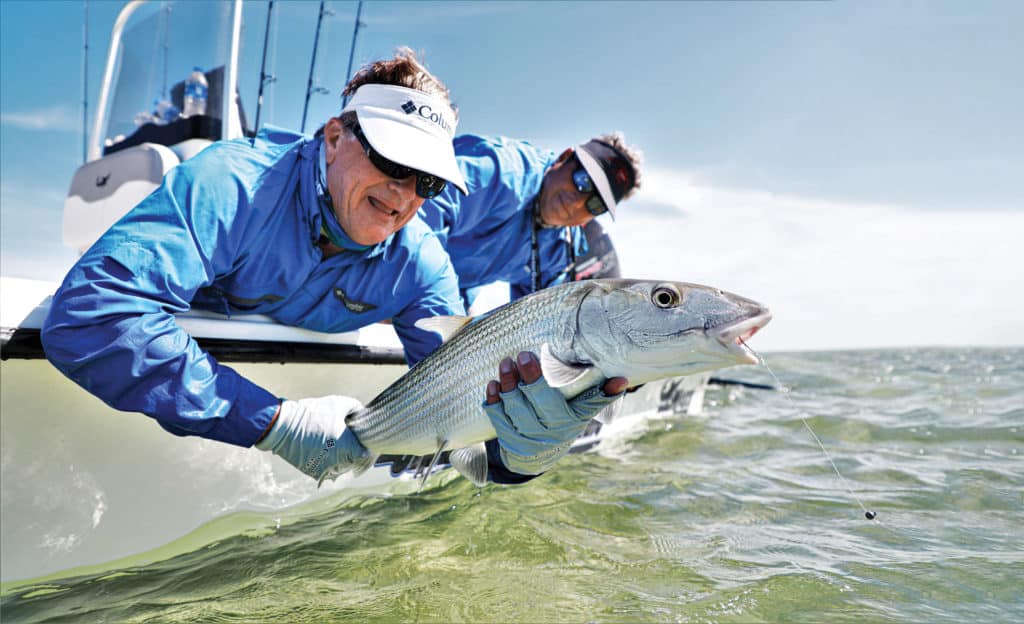
Capt. Joe Gonzalez was first to eye a single cruiser. Time froze as he placed a bait in the bonefish’s path, and I even held my breath for fear of scaring the fish. The gray shadow slowly proceeded in the same direction, but suddenly the fish tensed up and charged the bait.
As Gonzalez came tight, the hooked bonefish vanished in an explosion of water and a cloud of marl. It was now OK to resume breathing.
Gonzalez masterfully played the fish alongside the boat. I removed the hook, snapped a few quick pictures, and set it free. Measuring 27 inches to the fork, the plump fish was a solid 9-pounder, a classic representation of a Biscayne Bay bonefish.
Nationally Acclaimed
As a Miami native, I can attest to the countless newspaper and magazine articles, television shows and fishing seminars in the 1970s and ’80s touting Biscayne Bay as the destination for trophy bonefish, and justifiably so. Here, bones live within the northernmost range of their preferred water temperature. Subsequently, it’s the larger individuals, more tolerant of cooler water, that populate the famous shallows. Today, for bonefish approaching or exceeding double-digit weights, Biscayne Bay is still hard to beat.
Hot Pockets
My largest bone to date, an 11 3/4-pounder, was caught off Mashta Point in Key Biscayne while wading for tailers, with Miami’s skyline as the backdrop. Capt. Carl Ball, another veteran of the area, claims bonefishing around Key Biscayne remains productive. “The average fish now weighs 3 or 4 pounds, instead of the 5 to 8 back in the day. But you can’t discount the possibility of scoring bigger fish,” he adds, though chances at large bones increase from Soldier Key to the south.
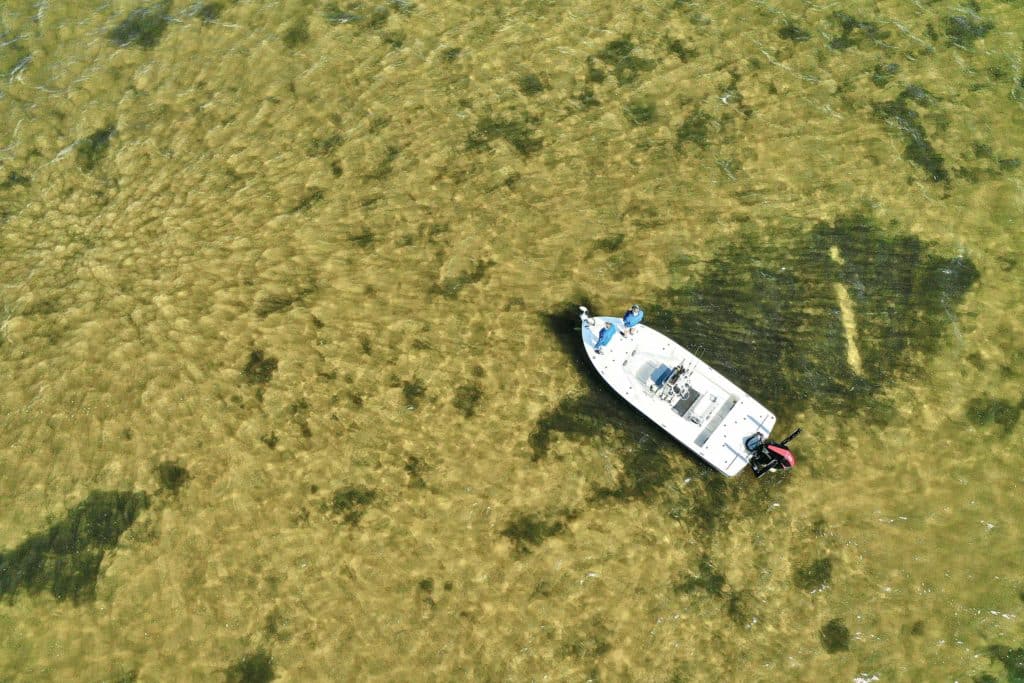
Picking Off Mudders
Gonzalez and I recently chased bonefish in the bay, concentrating on cruising fish, those mudding, and any responding to our chumming efforts. The day prior, he encountered two big muds on the bay’s western side, and he brought us to this area during the same tide stage. Sure enough, we located active muds and scored.
For mudding bonefish, Gonzalez prefers a 1/8- to 3/8-ounce brown-and-tan jig. His tried-and-true tactic is simple: You cast into the fringes of the mud, hop the jig through it, and it shouldn’t take you long to connect with one of the bones churning up the bottom in search of forage.
Stage Presence
“Many of the Biscayne Bay flats that produce good fishing comprise three different bottom compositions, which I refer to as stages,” Gonzalez says. “To have healthy turtle grass on oceanside flats, there has to be a buffer serving as a barrier against strong winds and waves, and that’s where stage one comes in.
“A part of the flat typically never exposed at low tide, stage one has a colorful, aggressive type of bottom with many different soft corals, sea fans and sea rods, along with some brown elkhorn corals, basket sponges and others. There is also sargassum or other vegetation in the mix,” Gonzalez explains.
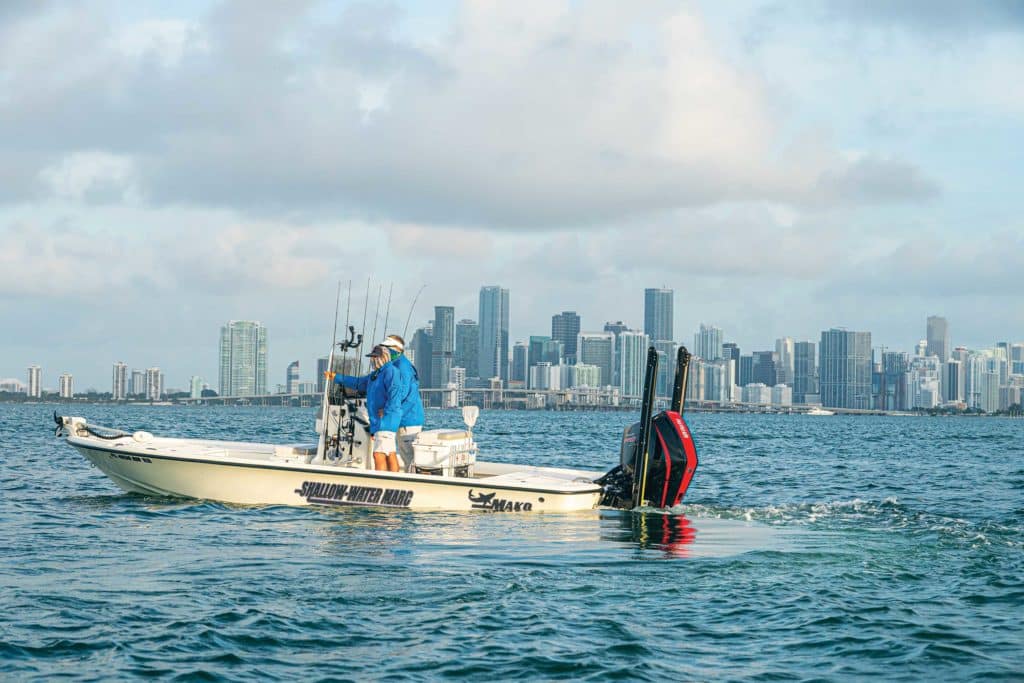
“Stage two is a transitional zone, usually no more than 50 to 80 yards wide, with hard, lightly colored bottom with sea cucumbers and small coral life, but very little vegetation. On certain tidal stages, bonefish use it as corridors to move from one area to another, and they’re easy to spot,” he says.
Gonzalez adds: “Stage three is the crown of a flat, primarily a soft-mud-and-turtle-grass combination that sustains bottom dwellers like shrimp, crabs and worms. It’s here that bonefish find most of their food, but this part of the flat is exposed on low tide. So, on an incoming tide, bonefish move up the flats and, once they reach the crowns when fully covered by water, they feed aggressively.”
It was along the crown of a flat where we scored our first bone: a chunky fish picked out of a trio. We later released a couple more, all on similar stage-three spots.
Match the Sky
Bonefish have keen sight, and are sensitive to movement and vibration, hence the need for a stealthy approach. “Bonefish are always on alert for predators, in the water and up in the air,” Gonzalez says. “They know they’re extremely vulnerable in skinny water. Brightly colored shirts, like yellow or orange, spook more fish than light blue and white, which blend with the sky.”
Stealth also transcends to tackle. Gonzalez prefers 8-foot spinning rods, and he spools reels with 10-pound braid for additional casting distance, crucial for wary bonefish. We also rigged with 20-pound fluorocarbon leaders, which blend best with Biscayne Bay’s clear waters and have the abrasion resistance to weather abuse from sea fans, mangroves and hard bottom.
Casting Calls
We fished live shrimp and crabs on 2/0 bait-holder-style hooks, preferred by Gonzalez. The crabs we hooked by their carapaces. With shrimp, we pinched off the tail fins, inserted the hook through the tail end, turned it, and pushed the point back into the bait.
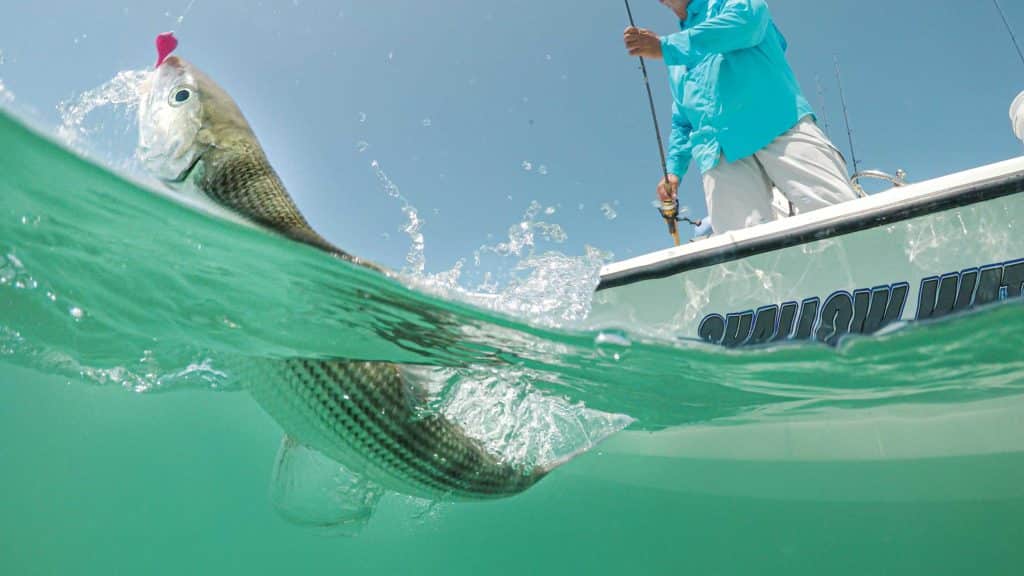
Artificials work too. Like Gonzalez, Ball prefers small jigs. “I use weedless 1/4- to 3/8-ounce jigs in white-and-brown or white-and-pink. Small soft-plastic grubs are also effective,” he says. “Cast ahead of the fish and beyond its estimated route, then slowly retrieve the bait or lure into its path. If the bone comes for it fast, let it fall and the bone will zero in. If not, hop it on the bottom a foot or two. The fish will notice and take it on the fall.”
Pros’ Picks
For locating bonefish, Capt. Bob Branham, with 43 years of experience fishing Biscayne Bay flats, recommends fishing the stronger tides around the moon. “That way, you’ll have a morning incoming tide and an afternoon falling tide. You’ll be going with the current with the sun at your back. A falling tide concentrates bonefish on the edges of a flat. The same happens during the first quarter of an incoming tide.
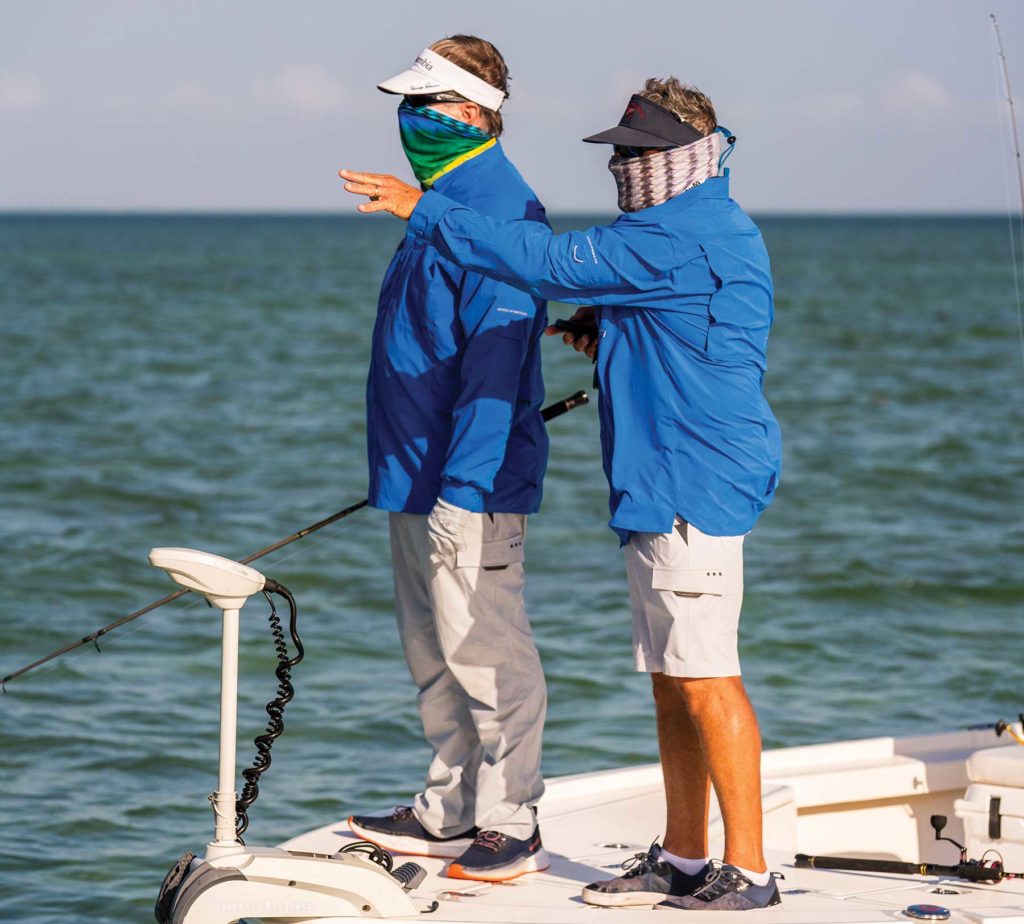
“When visibility is low, chumming is a good alternative,” Branham says. “Stake out on a flat adjacent to deeper water, break up several shrimp or crabs, and toss them over a spot behind the boat,” he says. “When fish move in to feed, cast your bait into that spot. The pickup should be quick. If not, twitch the bait to draw the fish’s attention.”
Gonzalez advises to look for fish oceanside, on stage-one bottom, during winter cold fronts. “Bones school tightly then, and sometimes rise near the surface for the warmth,” he says. “On a falling tide, the water coming out of Biscayne Bay is cold, so fish seek areas with little or no current, often on stage-one bottom, where large fans and sponges can help them escape predators.
“During fall and spring, bones spread out and tail or mud in spots with decent water flow. In the summer, look for smaller flats and strip banks with good tidal flow, where water is cooler. Closer to dusk, especially after a hard rain, bonefish come up on the flats as water cools down and tail happily,” Gonzalez says.
Still on Top
When asked why Biscayne Bay’s bonefishing now sees a fraction of the media attention it once commanded, Branham says there are fewer bonefish and not as many large ones. “A good day now is five or six shots, but we still get those exceptional 20-plus-shot days, only more spaced out. Catching a 10-pounder also remains a possibility, but the odds are not as favorable,” he adds.
Worsening water quality, increased boat traffic and fishing pressure, and some severe cold fronts have all taken a toll on Biscayne Bay bonefish, Branham says, but he attributes their decline, in large part, to sustenance netting in Cuba. “Bonefish spawn offshore, with their larvae traveling north with the currents. So, bonefish stocks in Miami and the Florida Keys come from spawns off western Cuba and Mexico’s Yucatan, where fewer fish remain, so fewer larvae make it to our waters.”
Ball believes Biscayne Bay is still a world-class bonefish destination. “For fish in the upper weight range, Biscayne Bay remains on top. Plus, if you’re visiting South Florida, you don’t have to drive to the Keys or fly to the Bahamas. Great bonefishing is right at your doorstep.”
Bonefish Access Ramps
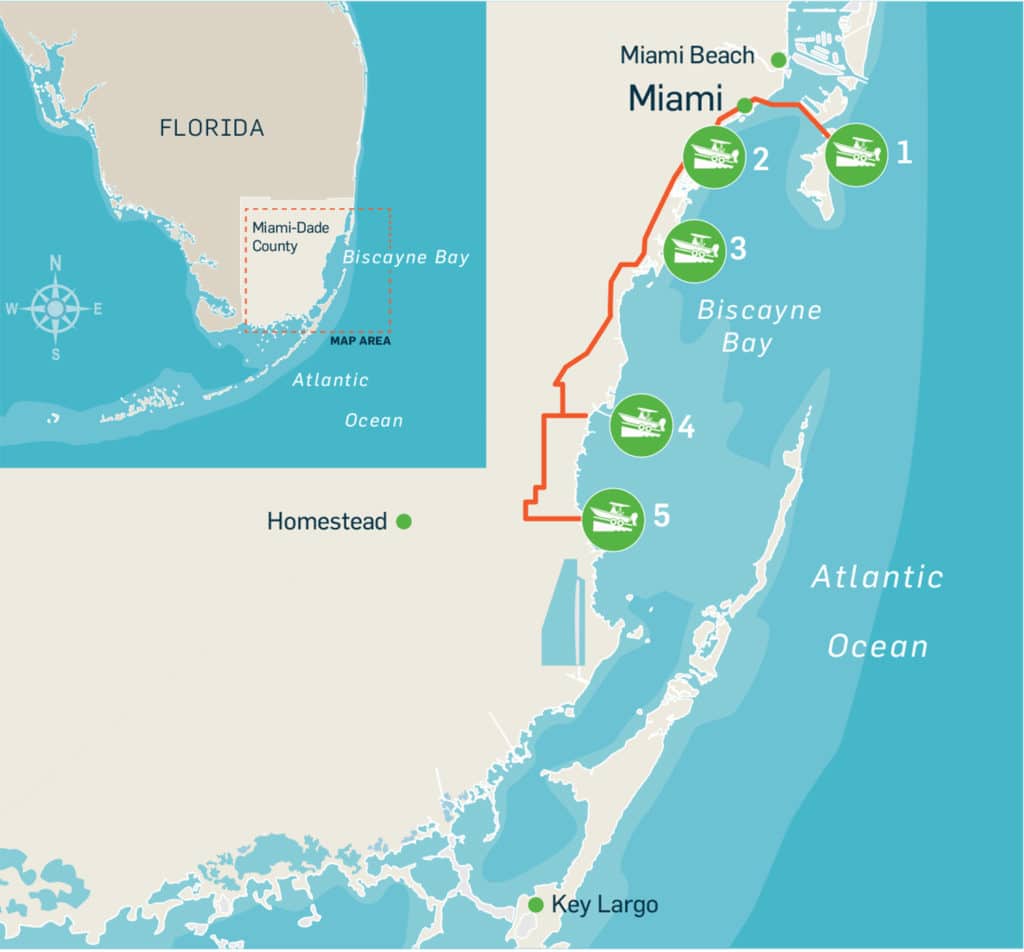
- Crandon Park Marina Boat Ramp, Key Biscayne (east side of the bay); 4000 Crandon Blvd., Key Biscayne
- Seminole Boat Ramp at Dinner Key Marina (west side of the bay); 2710 S. Bayshore Drive, Miami
- Matheson Hammock Park (west side of the bay); 9610 Old Cutler Road, Coral Gables
- Black Point Park (west side of the bay); 24755 SW 87th Ave., South Miami-Dade
- Homestead Bayfront Park, Homestead Marina (west side of the bay); 9698 N. Canal Drive, Homestead
Top Lures to Pick a Bone
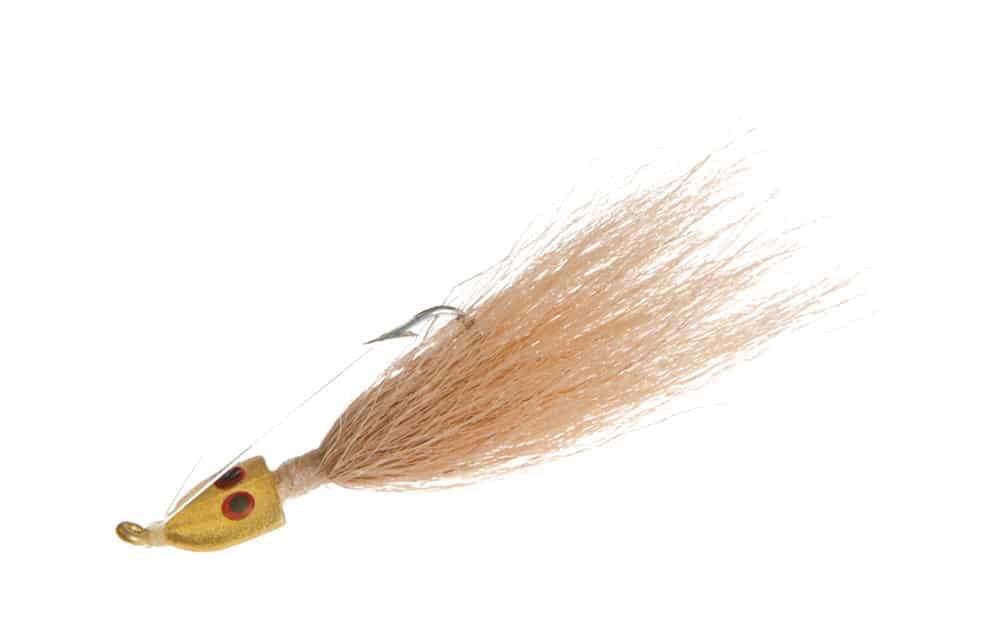
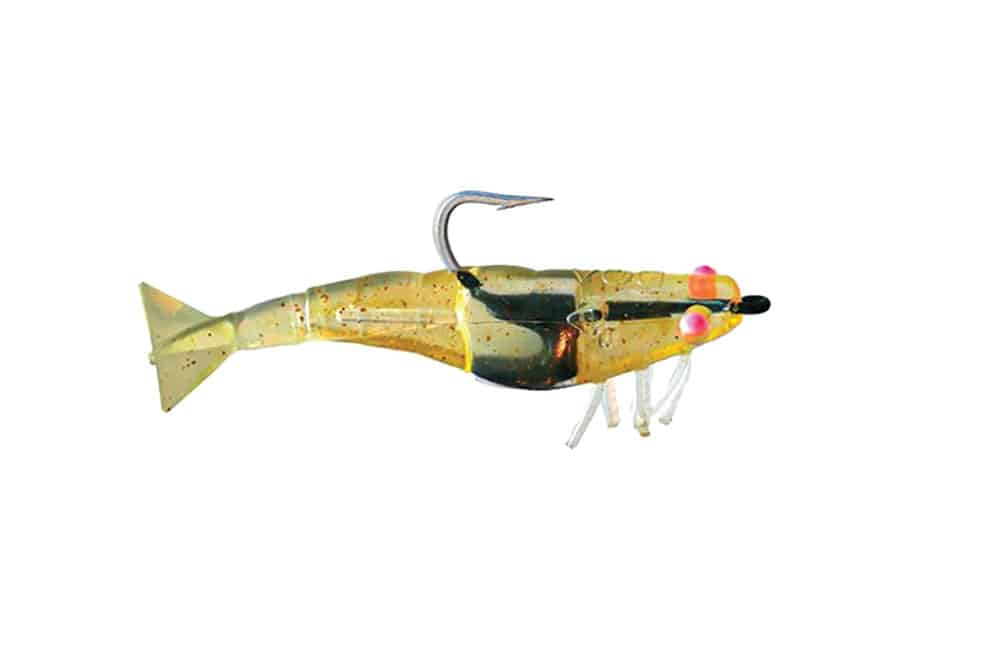
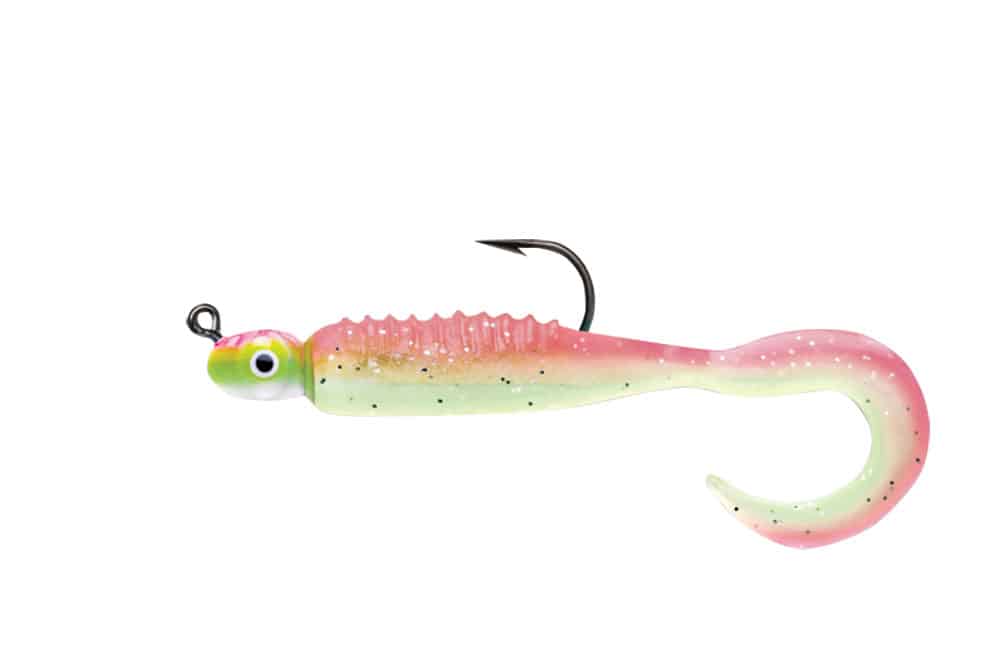
Whether chumming or sight-casting to tailers and cruisers, these artificials have been reliable producers in Biscayne Bay and other waters.









